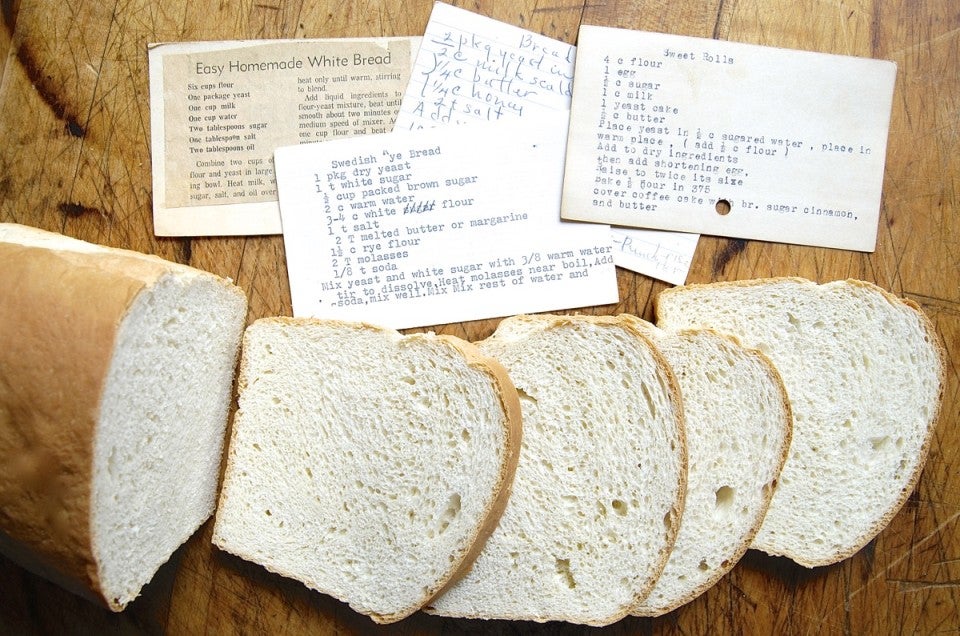


You love your grandma’s homemade sandwich bread recipe, but wish it was just a bit more tender and less crumbly. You’ve found a recipe online for cinnamon rolls but are bummed at how quickly they harden up and become dry once they’re out of the oven. Want to make your favorite yeast bread and rolls reliably soft and tender? Tangzhong is the solution.
With origins in Japan's yukone (or yudane), tangzhong is a yeast bread technique popularized across Asia by Taiwanese cookbook author Yvonne Chen. It involves cooking a portion of the flour and liquid in the recipe into a thick slurry prior to adding the remaining ingredients, resulting in soft, fluffy bread.
This pre-cooking accomplishes two positive things: it makes bread or rolls softer and more tender, and extends their shelf life. For the science behind this, read our Introduction to tangzhong.
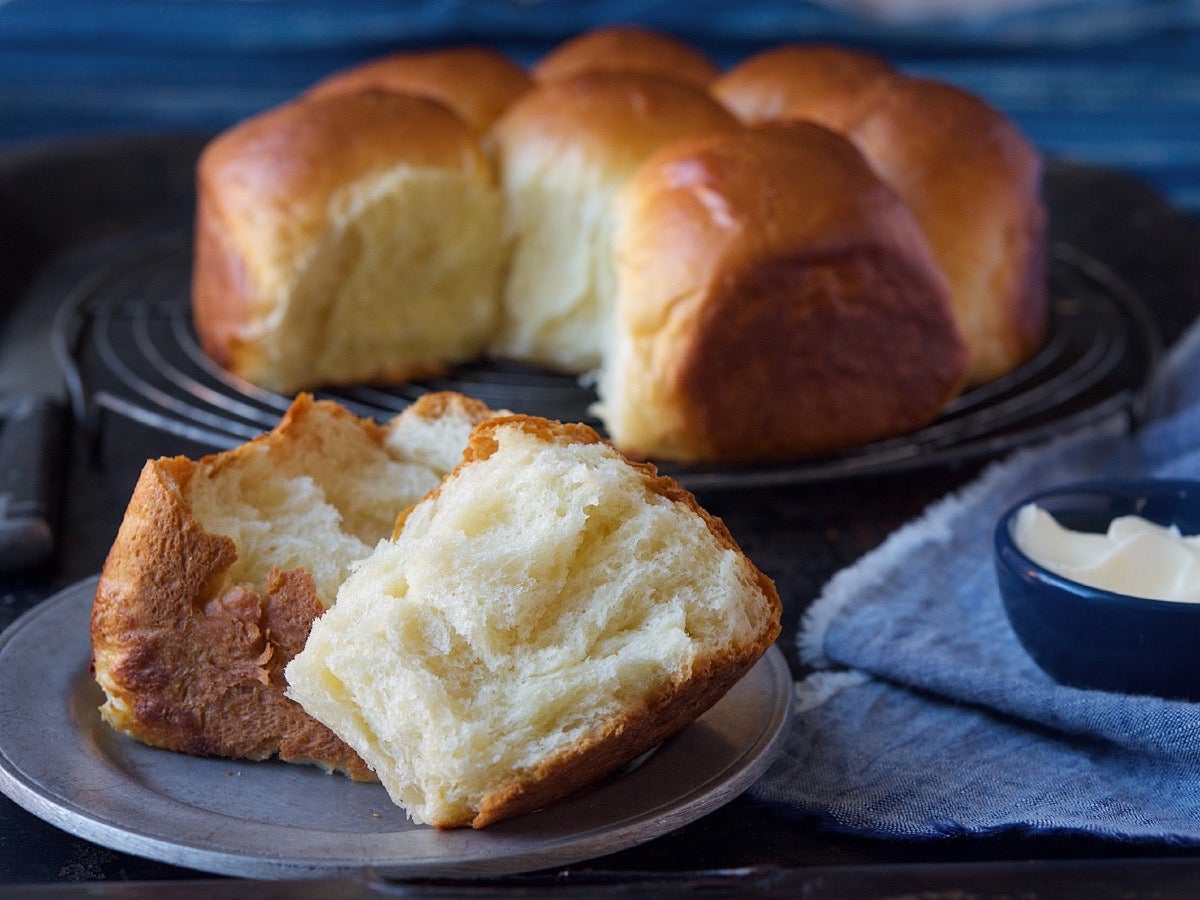
If you’ve tried our Japanese Milk Bread Rolls or Soft Cinnamon Rolls, you know how deliciously tender they are. And you’ve probably thought about trying tangzhong with some of your own favorite yeast recipes. Softer, moister dinner rolls? Nothing wrong with that.
So how, exactly, do you convert a standard yeast bread recipe to use tangzhong?
Thoughtfully.
Start by managing your expectations. Do you really want to pair tangzhong (soft, tender bread) with crusty baguettes or chewy bagels? That would be like making potato chips in a steamer: it goes against the nature of the beast.
It's important to choose an appropriate recipe: a yeast bread that’s inherently soft, tender, and light. Be it a white sandwich loaf or buttery dinner rolls, tangzhong will enhance bread’s texture, and keep it fresher longer.
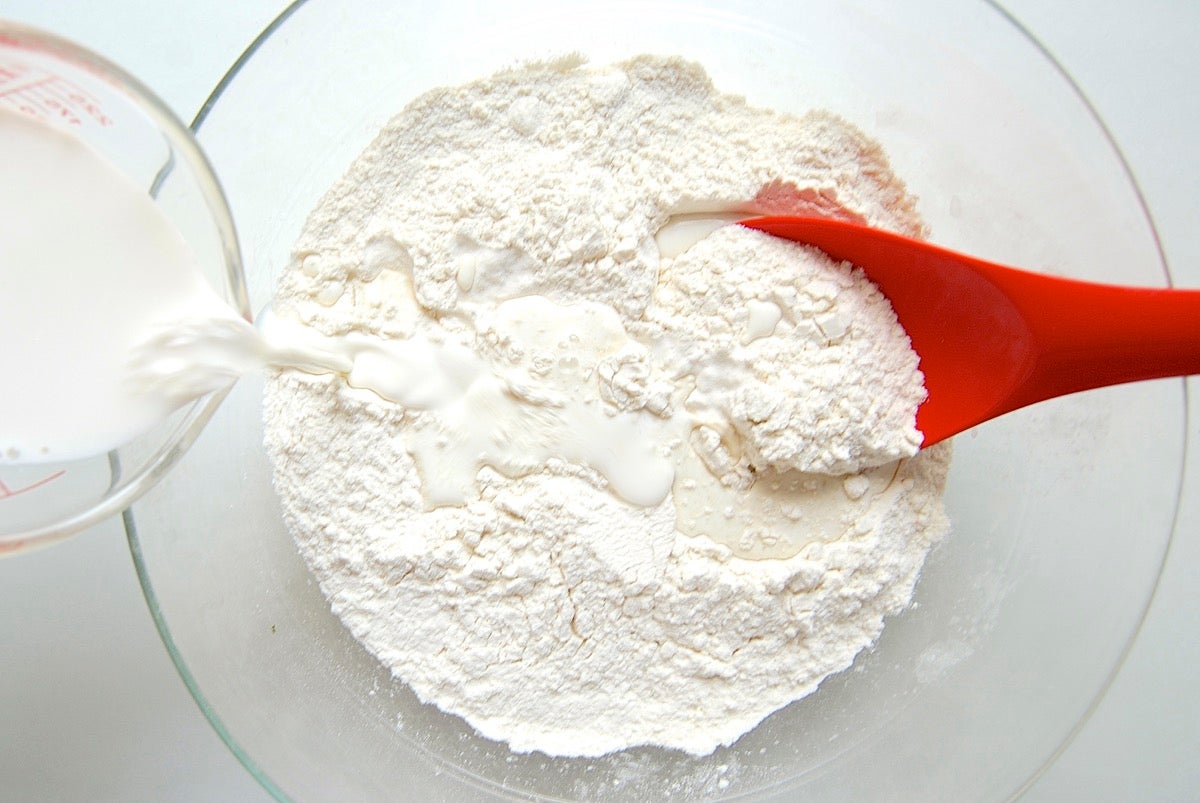
Once you've chosen a recipe, you need to determine its hydration: the percentage of water (or other liquid) compared to flour, by weight. A dough’s hydration determines how stiff or soft it’ll be, and also influences how vigorously it rises. Finished loaves with low hydration are usually dense and dry; those with higher hydration, soft and moist.
To take a simple example, a recipe that includes 75g of water and 100g of flour has a hydration of 75%. Or here’s an example in American weights: a recipe using 1 cup water (8 ounces) and 3 cups flour (12 3/4 ounces) has a hydration of 63% (8 divided by 12 3/4).
Don’t have a scale? I highly recommend you acquire one, because trying the tangzhong technique without a scale requires quite a lot of extra effort converting volume to weight.
And by the way, if you're following an older recipe that most likely doesn't include ingredient weights, see our handy ingredients weight chart.
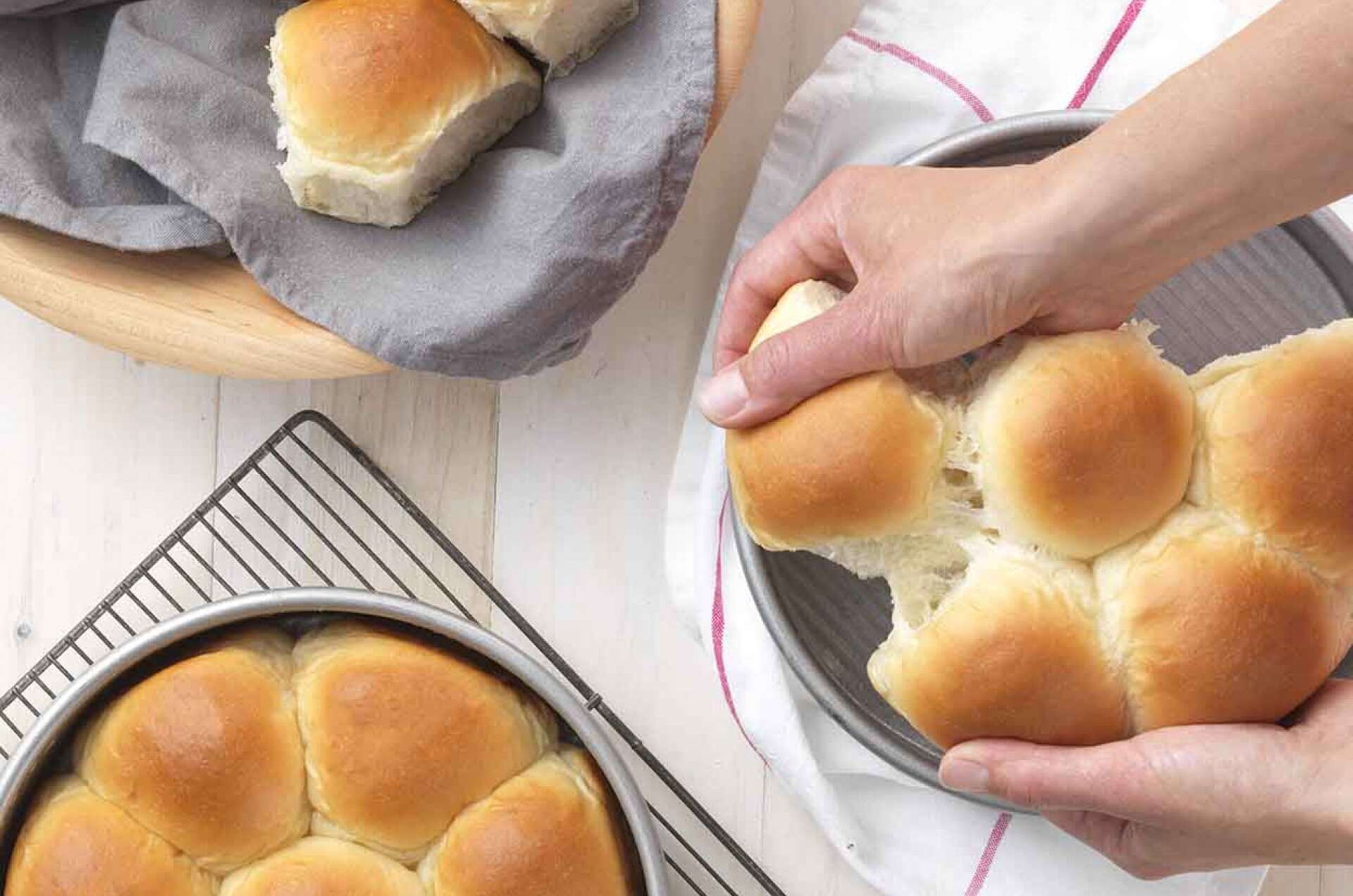
The typical sandwich bread or dinner roll recipe (like these Golden Pull-Apart Butter Buns) has a hydration level of around 60% to 65%.
But when you’re using the tangzhong method, you want your recipe’s hydration to be about 75%.
Why? Because when using tangzhong, some of the liquid in the dough is “trapped” by the pre-cooked slurry (the tangzhong), and thus plays no part in the dough’s texture; as far as hydration is concerned, it’s as if that liquid isn’t even there.
Let’s say your original recipe’s hydration is 60%. When you transfer some of its liquid to the tangzhong, the resulting dough will behave as if its hydration is much lower.
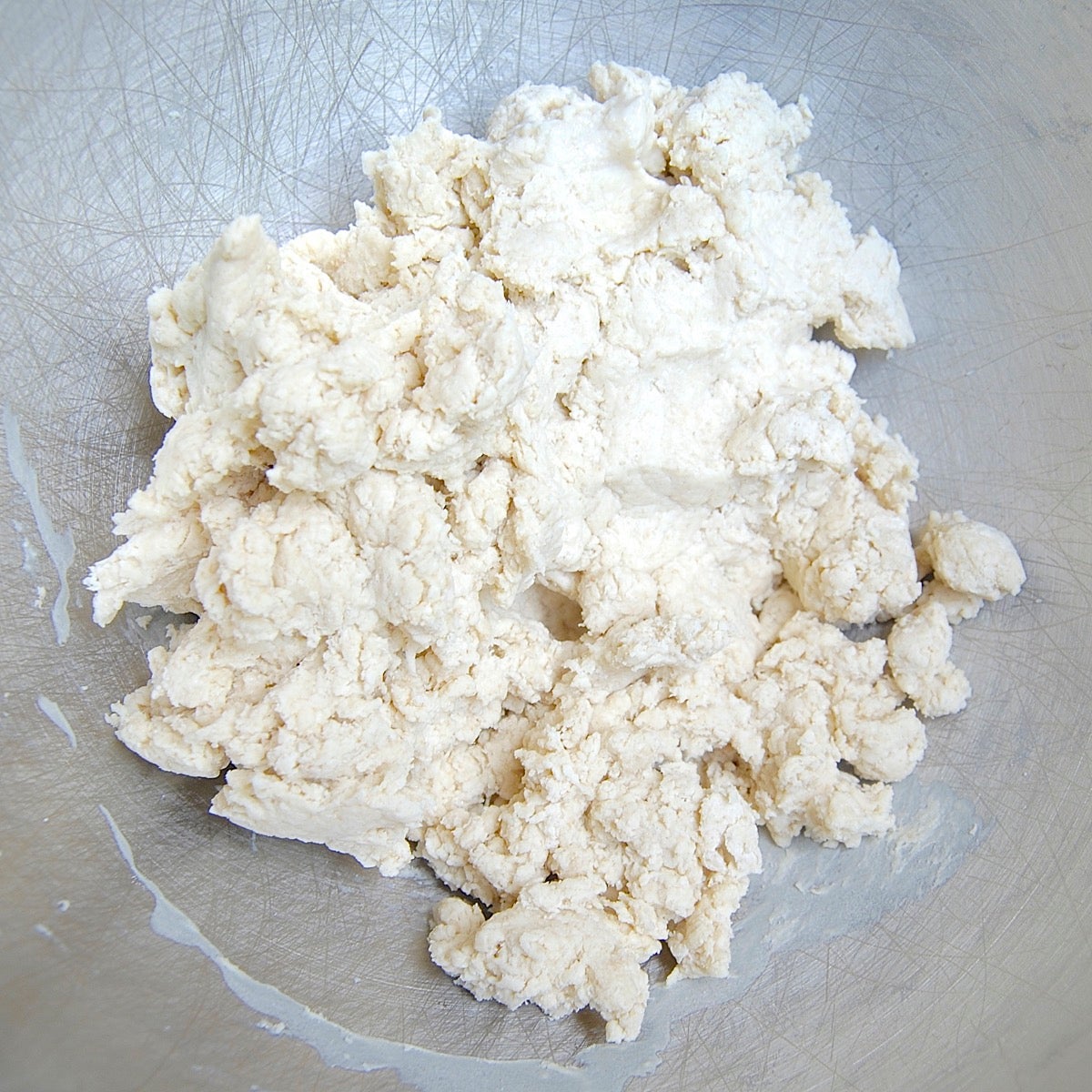
The dough will be stiff and dry, which can inhibit its rise and lead to dense, heavy bread.
So in order to wind up with dough that’s as soft and smooth as the original, you need to add more liquid initially.

Let’s convert this popular recipe to use tangzhong and see how it goes.
1 cup (227g) milk
2 tablespoons (28g) butter
2 teaspoons instant yeast
2 tablespoons (25g) sugar
1 1/4 teaspoons salt
3 cups (361g) King Arthur Unbleached All-Purpose Flour
What’s this dough’s hydration? 227g (weight of milk) divided by 361g (weight of flour) = 63% hydration.
But remember, in order to use tangzhong you want your hydration to be 75%: the liquid should equal 75% of the weight of the flour.
Do your arithmetic: 361g x .75 = 271g. So you want the amount of milk in the recipe to be 271g, not 227g. Result? You’ll add 44g additional milk to your recipe.
Let’s see how this works. I’ll make the recipe three ways:
(A), as written, with a hydration of 63%;
(B), using tangzhong without increasing the recipe’s hydration to 75%;
(C), using tangzhong after increasing the recipe’s hydration to 75% by adding 44g milk.
First I make the tangzhong slurry, the cooked mixture of flour and liquid. A standard slurry uses between 5% and 10% of the flour in the recipe and is composed of one part flour to five parts liquid (by weight).
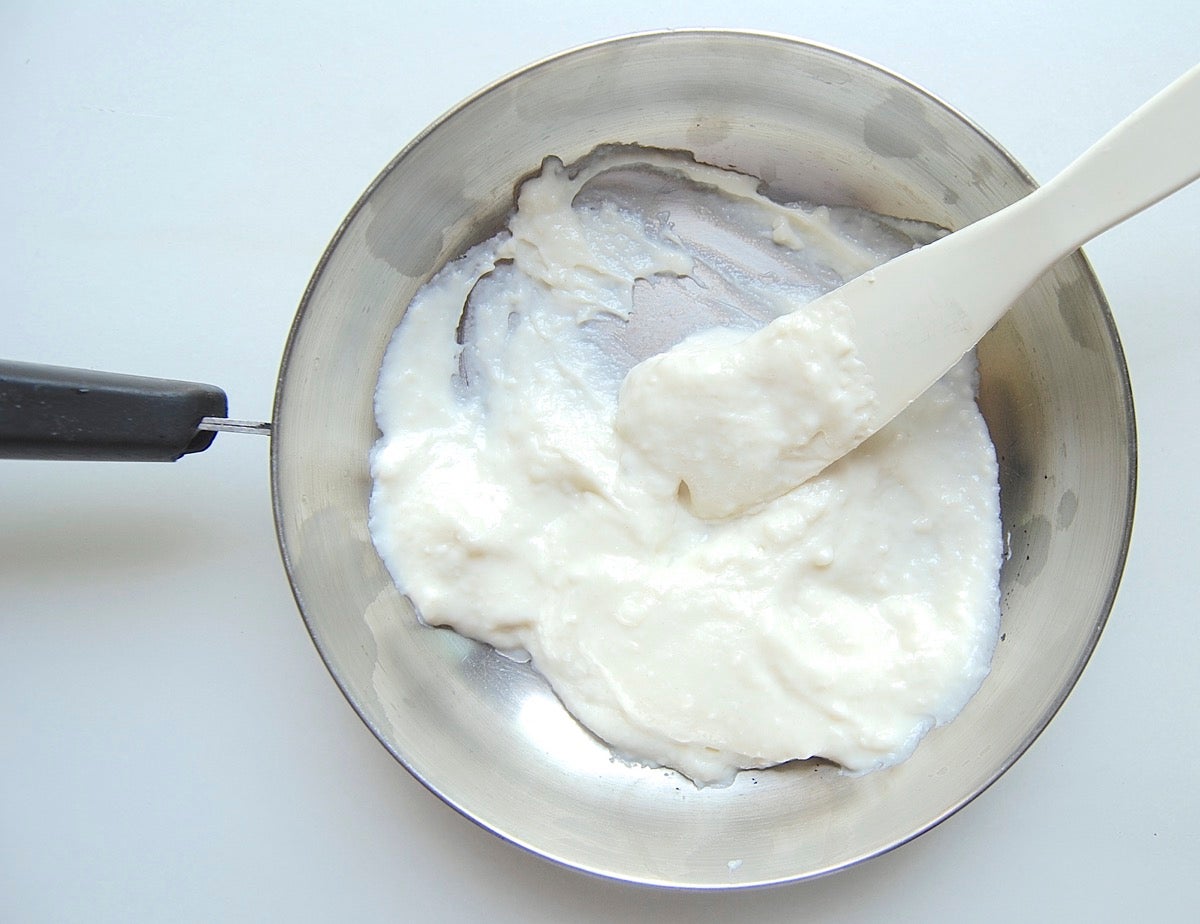
I’ve now made this standard slurry often enough that this is what I use for any yeast recipe calling for between 3 and 4 cups of flour: 3 tablespoons (23g) of the flour in the recipe + 1/2 cup (113g) of the liquid.
Remember, you're using flour and liquid from the recipe, not adding extra flour and liquid! Take that into account when you're measuring out the remaining flour and liquid for the dough.
For each of the test loaves using the slurry (B and C), I combine 23g of the recipe’s flour with 115g of the recipe’s milk. I cook the mixture over medium heat until it thickens, and put it into the mixing bowl to cool down a bit while I assemble the other ingredients.
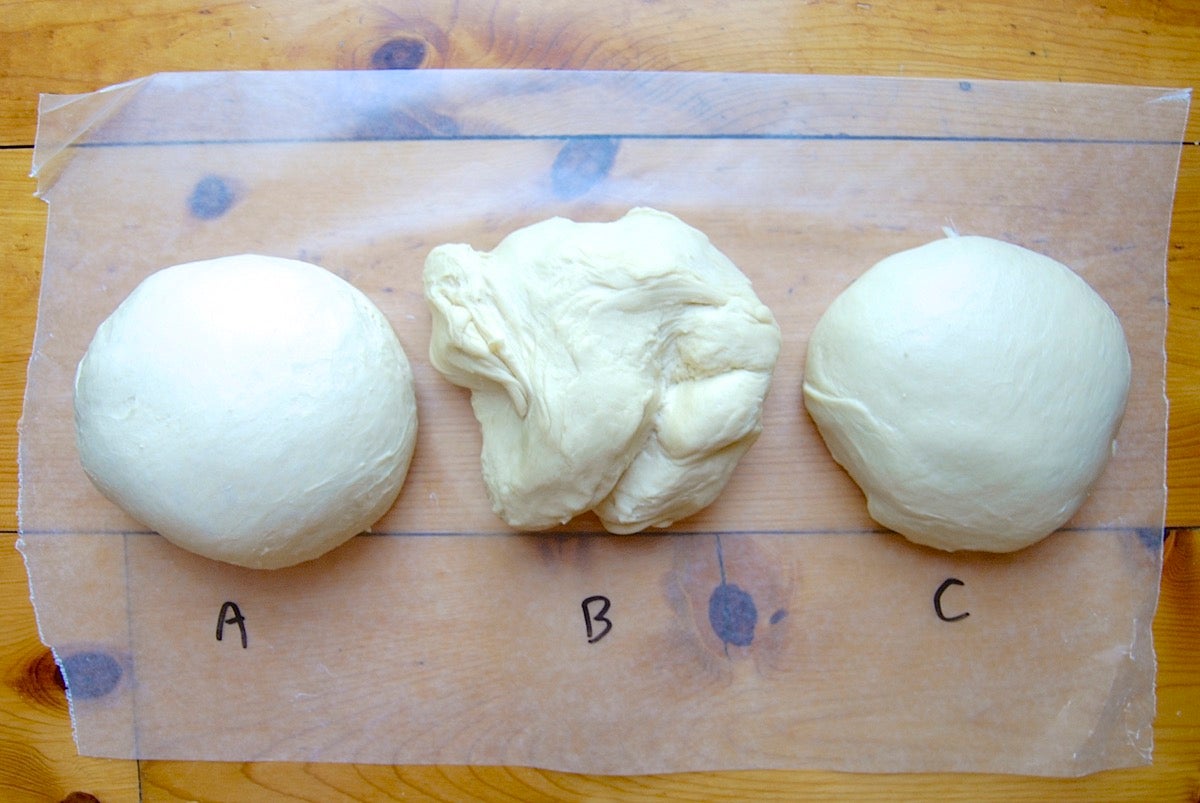
Next, I mix and knead the three doughs. (A), the control, is soft and smooth; (B), with the slurry but without any added milk, stiff and gnarly; and (C), with the slurry and added milk, very similar to (A), perhaps a bit softer.
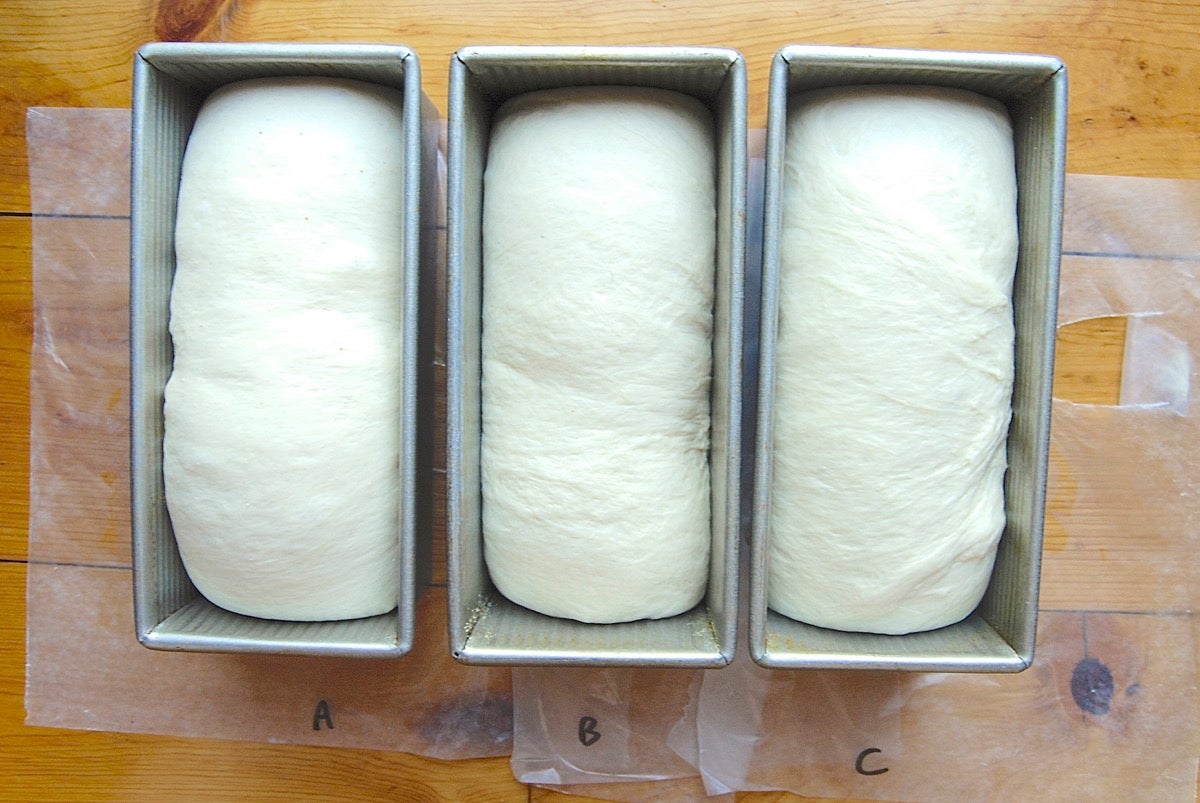
I let the doughs rise, then shape them into loaves and place each in an unlidded 9" pain de mie pan (my loaf pan of choice). I let the loaves rise, then bake them.
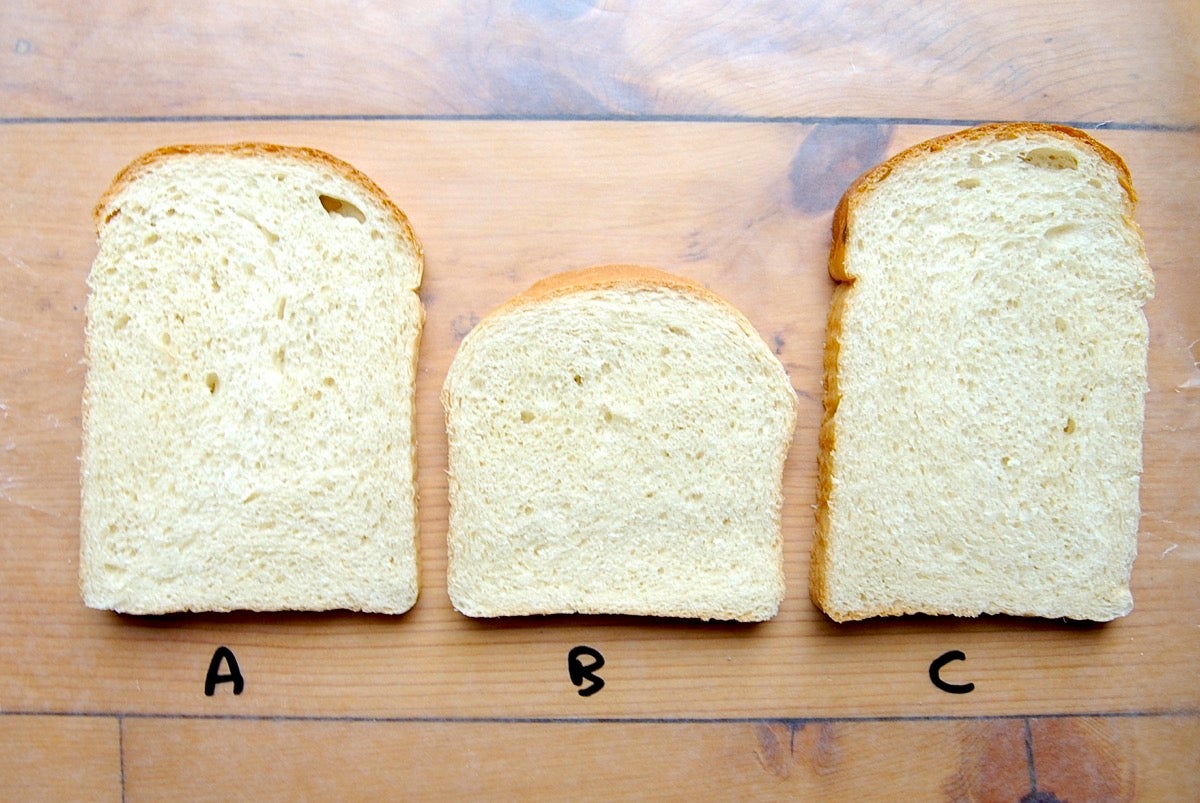
Look at the difference! (A), the original recipe, and (C), the added milk/slurry recipe, (C), rise beautifully. (B), the recipe using the slurry but without any added milk, rises much less.
It’s impossible to photograph texture and moistness, but right out of the oven (C) is slightly moister and more tender than the original loaf (A). After a few days, (C), the loaf with the slurry, is still nice and fresh; while the original loaf is definitely showing signs of staleness.
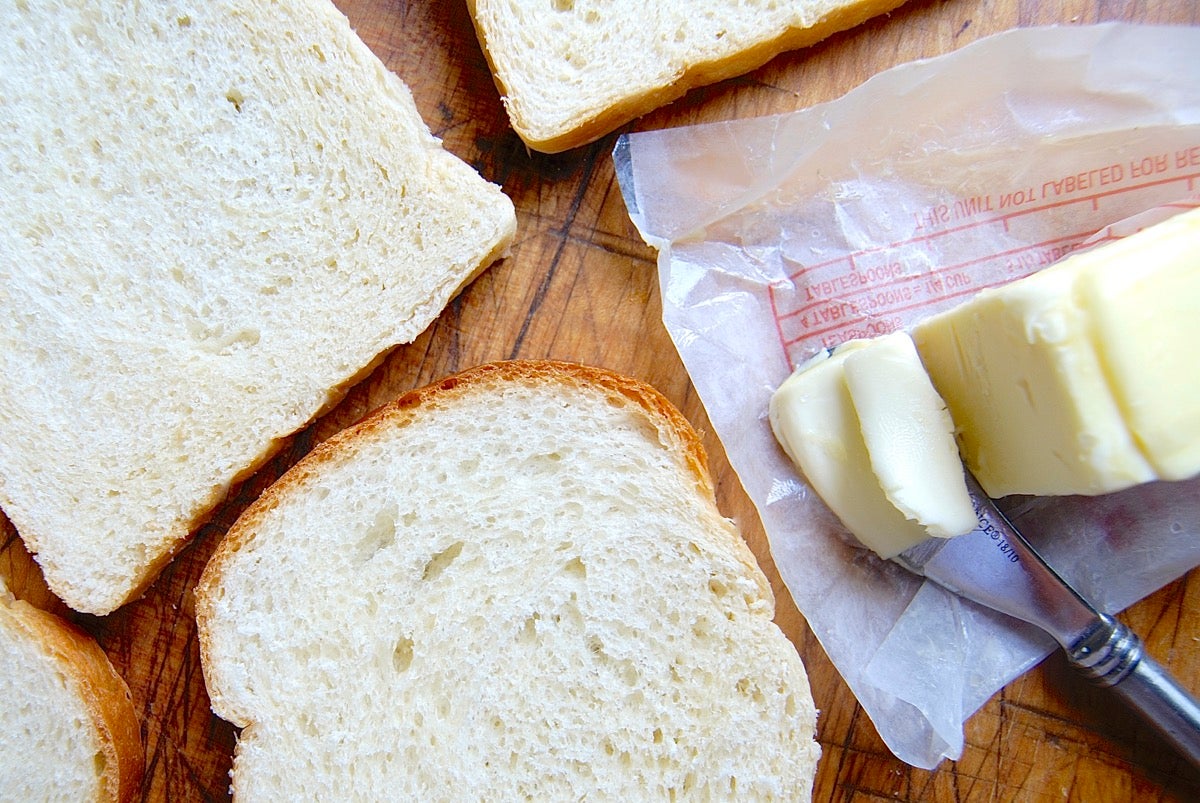
Bottom line: By bringing your favorite sandwich bread or dinner roll recipe to 75% hydration and then using tangzhong in the dough, you’ll make bread that’s softer, lighter, more tender, and with longer shelf life than the original.
Once you feel comfortable with the basics of tangzhong, you can try fine-tuning your hydration math. While water is obviously 100% water, there may be other ingredients in your dough that are adding to its hydration: for instance, eggs or honey.
This fine-tuning is potentially only necessary in recipes that use a lot of butter and/or eggs, like brioche; or recipes with a significant amount of liquid sweetener.
Truthfully, most of my colleagues here at King Arthur consider simply the main liquid and flour when assessing a recipe's hydration. Because almost all of the time, that level of simplicity is fine: If your recipe includes just 2 tablespoons of butter, its minuscule water content isn't going to make or break your bread. Still, once you’ve got the calculator out, it’s fun to take this extra step towards accuracy.
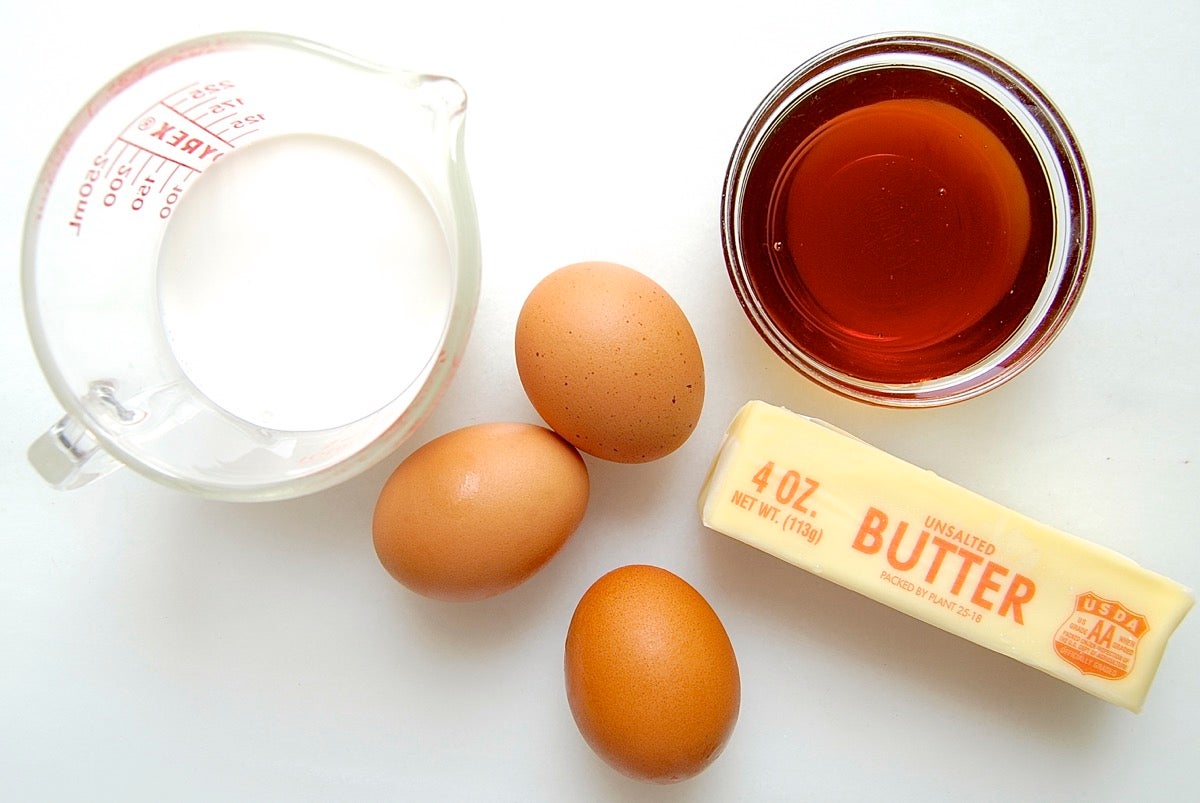
If you want to drill down with hydration, here’s a list of common yeast bread ingredients and their percentage of water:
Milk: 87% water
Large eggs: 74% water (1 large shelled egg weighs 50g)
Liquid sweeteners (e.g., honey): 17% water
American-style butter: 16% water
Vegetable oil: 0% water (100% fat)
Use the information above to calculate how many grams of water are in any of these "rogue" ingredients in your recipe. Then add them to the total grams of the main liquid before calculating hydration.
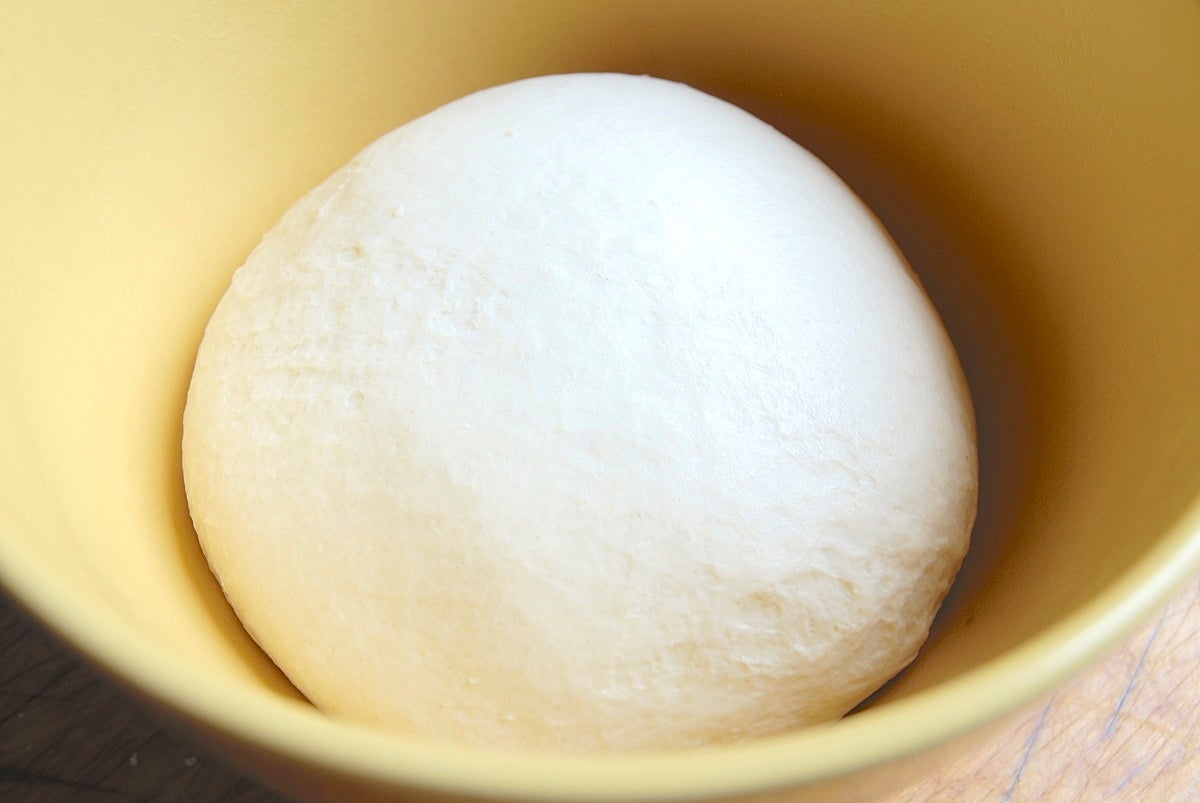
A great variety of factors come into play when you're baking yeast bread, and some of these affect hydration. Keep the following in mind as you experiment with tangzhong:
Mashed potatoes or other mashed fruits/vegetables (pumpkin, squash) can affect dough's hydration. There's no way to judge their effect ahead of time; it's best to add them, then adjust dough's consistency with additional flour if necessary.
Hot/humid weather increases flour's moisture content; cold, dry weather makes flour drier. You'll typically use a bit less liquid in yeast recipes in summer, a bit more in winter; see our blog post, Winter to summer yeast baking.
Sourdough starter can be thick and viscous, quite thin, or anything in between. As with mashed vegetables, adjust the mixed dough's consistency as needed.
Have you tried baking yeast bread or rolls using the tangzhong technique yet? If so, how did you like the results? Please add your thoughts in comments, below.
For more on tangzhong:
Introduction to tangzhong: an intriguing technique for softer yeast bread and rolls
April 19, 2021 at 12:57pm
My no-knead cinnamon roll recipe is 82 % hydration with 16-48 H retardation do I need to lower the hydration to 75%?
April 19, 2021 at 2:51pm
In reply to My no-knead cinnamon roll… by MARGARETA EKBLAD (not verified)
No, you're good to go, Margareta! It just needs to be 75% at a minimum.
April 18, 2021 at 8:06pm
The way I was taught to do it was very simple. Just grab 5 to 10 percent by weight of your flour and then multiply by 5, this will give you the amount of water for the tangzhong. That's it!, you just add this to the rest of the flour and ingredients and no need to recalculate hydration. It's supposed to be a method to add extra hydration to a recipe.
April 17, 2021 at 5:53pm
How do ingredients like raisins or candied fruit affect hydration? I add about 250g.
April 19, 2021 at 9:04am
In reply to How do ingredients like… by Ted (not verified)
Hi Ted! Ingredients like raisins or candied fruit don't have an impact on the hydration of a dough. We hope this helps and happy baking!
April 28, 2021 at 8:36am
In reply to Hi Ted! Ingredients like… by mmoss
If i added milk powder to the recipe as added flavor, should i take that into account for the hydration as well? Let’s say if my flour is 300gr and my milk powder is 30gr, do i use 225gr of milk/water, or 247.5gr of milk/water to the recipe? Please advise
April 28, 2021 at 12:07pm
In reply to If i added milk powder to… by Dee (not verified)
Hi Dee! If you're adding milk powder, you shouldn't need to adjust the hydration of your dough.
April 14, 2021 at 9:22am
If the liquid in the recipe I'm trying to convert is in milliliters, can I assume 1:1 correlation to grams or do I have to mess with density adjustments? Perhaps you could make all our lives easier by telling me that the density adjustments are so trivial that it wouldn't matter?
April 14, 2021 at 9:44am
In reply to If the liquid in the recipe… by Lyla (not verified)
Hi Lyla, the density of water is 1 kilogram per liter (kg/L) at 39.2°. This means that 1 liter of water weighs 1 kilogram and 1 milliliter of water weighs 1gram. If you ever need to look up the weight of another liquid, you can use our handy Ingredient Weight Chart.
April 12, 2021 at 5:41am
Where has this miracle been all of my life?
I recently became acquainted with tangzhong when I bought the newest edition of the Bakers Companion. I started with a loaf of milk bread, then the cinnamon rolls (!!!) and then dinner rolls. I’ve moved up to sandwich buns and there is no stopping me! I have people begging me to bake rolls and they stole the show at an Easter dinner with family.
I’ve always been in love with white sauces, ever since I learned about the “three strengths” in Mrs McBurney’s junior high school home ec class back in the 60s. So when I made a tangzhong the first time, I thought, oh, it’s a bit like a #2 white sauce!
But what this concoction did to my bread and rolls was like adding angel dust to them!
I’m glad to learn some guidelines to converting existing recipes to tangzhong since I’m a chemist by trade.
I did read that tangzhong has not successfully impacted sourdough recipes and I suppose this is understandable due to the long rise and proof but I still may try it in the future.
Thank you for this informative article on conversions and thanks to King Arthur for introducing me to tangzhong.
Pagination